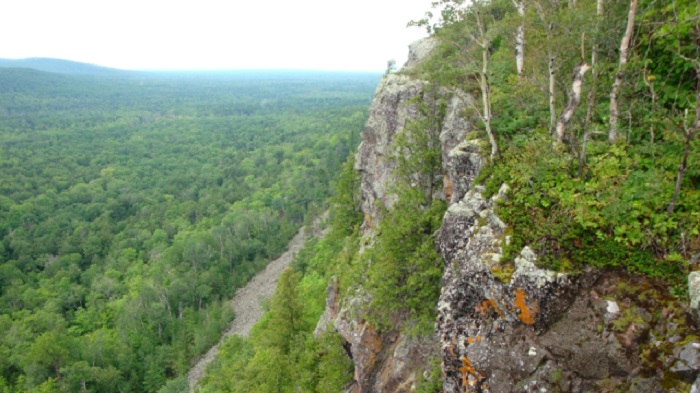Grand Rapids, MI – When people think of volcanoes, Michigan is far from the first place that comes to mind. But volcanic activity, which took place billions of years ago, played a key role in shaping the state’s geology and creating some of its most valuable resources.
Evidence of this ancient volcanic activity can be found across Michigan’s Upper Peninsula, where the remnants of one of the largest lava flows on Earth are visible today. This massive flow is the result of the Midcontinent Rift System, a geological formation that first began to form around 1.1 billion years ago. The rift stretches across parts of North America, reaching from metro Detroit and Lake Superior to northern Ontario, Minnesota, and as far south as Missouri, Iowa, and Kansas.
According to William Rose, a professor emeritus of geological and mining engineering and sciences at Michigan Technological University, the formation of the rift was one of the first significant geological events on Earth. “More than a billion years ago, we had a huge, thick continent that piled up over the Earth’s mantle,” Rose explains. “As the rocks beneath it heated up, they created lava flows unlike anything we see today. The heat was so intense that it caused the land to split apart and form a massive rift basin.”
While the exact boundaries of the Midcontinent Rift System remain unclear, it is believed to extend from Kansas through Lake Superior and may even reach Alabama. However, most of the rift is buried beneath younger rocks, and it is only in areas near Lake Superior and Minneapolis where the remnants of ancient lava flows can be seen.
One of the most significant geological features of the rift is the Greenstone Flow, which was caused by the volcanic activity in the area. This massive lava flow eventually cooled into a vast expanse of basalt rock that forms much of the floor of Lake Superior and is the backbone of Isle Royale and the mountains of the Keweenaw Peninsula.
Researchers estimate that the Greenstone Flow contained anywhere from 1,650 to 6,000 cubic kilometers of lava, rich in iron and magnesium. Rose notes that estimating the exact volume of lava is difficult because the flow is only exposed in certain areas, but he adds that there is no other known lava flow on Earth that surpasses the size of the Greenstone Flow.
Parts of the Keweenaw Peninsula reveal basalt deposits up to 1,200 feet thick, evidence of the immense time it took for the molten rock to solidify. “The lava sat there for so long, it essentially formed an ocean of magma, taking upwards of a thousand years to cool and harden,” Rose explains.
The volcanic activity that gave rise to the Midcontinent Rift System and the Greenstone Flow has left behind more than just dramatic geological features. It also created the mineral-rich environment that has driven Michigan’s mining industry for generations. The minerals found in these ancient rocks, particularly iron and copper, have played a vital role in the state’s economic history.
Today, visitors to Michigan’s Upper Peninsula can see firsthand the lasting legacy of the rift system. From the rocky shores of Lake Superior to the mountains of the Keweenaw Peninsula, the remnants of ancient volcanic activity continue to shape the state’s landscape and serve as a reminder of the powerful forces that shaped the Earth’s crust.







